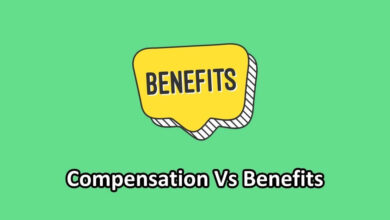A riot refers to a violent disturbance of the peace by a crowd, typically involving damage to property or harm to people. On the other hand, a protest is a peaceful demonstration or expression of objection or disapproval, often against a particular action, policy, or situation.
Understanding the disparity between riots and protests is essential for several reasons. Firstly, it helps in the accurate interpretation and reporting of events by media and authorities. Secondly, it aids in crafting appropriate responses and strategies to address the underlying issues fueling unrest.
Lastly, it promotes the preservation of civil liberties and democratic values by upholding the right to peaceful assembly while discouraging violence and chaos.
Protests Vs. Riots (Comparison Chart)
| Factors | Protests | Riots |
|---|---|---|
| Nature of Expression | Protest often involves peaceful demonstrations and dialogue. | Riots often manifest violent upheavals with destruction and chaos. |
| Intentions | Protests aim to advocate for change through nonviolent means. | Riots often lack specific objectives, result in indiscriminate damage. |
| Response from Authorities | Authorities typically respond to protests crowd control measures and negotiation. | Riots prompt law enforcement to intervene forcefully to restore order. |
| Public Perception | Protests are generally viewed favorably as expressions of democratic rights and civic engagement. | Riots are often condemned for their destructive nature and harm to communities. |
What is Protest?
A protest encompasses various forms of nonviolent expression aimed at raising awareness or advocating for social or political change. Characteristics include organized gatherings, chants, signs, and peaceful marches or rallies.
These events typically adhere to legal regulations and emphasize civil disobedience as a means of dissent.
Purpose and Goals of Protests
- Raise Awareness: Protests serve to highlight specific issues or grievances within society, drawing attention to injustices or inequalities.
- Advocate for Change: They aim to influence policymakers or public opinion to enact reforms or address pressing concerns.
- Empowerment: Protests empower individuals to voice their opinions collectively, fostering a sense of solidarity and community engagement.
- Pressure for Accountability: By mobilizing masses, protests create pressure on authorities or institutions to be accountable for their actions or policies.
What is Riot?
A riot involves violent and tumultuous behavior characterized by destruction of property, looting, and often physical confrontations with law enforcement. Distinguishing features include widespread chaos, lack of organization, and disregard for legal boundaries, resulting in harm to individuals and communities.
Factors Contributing to Riots
- Social Injustice: Deep-seated grievances stemming from systemic inequality, discrimination, or economic disparity can fuel collective anger and frustration, erupting into riots.
- Political Instability: Riots may erupt in response to political unrest, such as disputed elections, oppressive regimes, or failed governance, exacerbating social tensions.
- Perceived Injustice or Oppression: Instances of police brutality, unjust policies, or perceived injustices can trigger spontaneous outbursts of violence as a form of resistance or retaliation.
Key Differences Between Riots and Protests
- Nature of Expression: Protests involve peaceful demonstrations and dialogue, while riots manifest as violent upheavals with destruction and chaos.
- Intentions: Protests aim to advocate for change through nonviolent means, whereas riots often lack specific objectives and result in indiscriminate damage.
- Response from Authorities: Authorities typically respond to protests with crowd control measures and negotiation, whereas riots prompt law enforcement to intervene forcefully to restore order.
- Public Perception: Protests are generally viewed favorably as expressions of democratic rights and civic engagement, while riots are often condemned for their destructive nature and harm to communities.
Media Coverage and Framing
Role of Media in Shaping Narratives
Media plays a pivotal role in shaping public perception by framing events through selective reporting, language, and imagery. The narrative constructed by media influences how protests and riots are portrayed and understood by audiences, impacting public discourse and policy responses.
Impact of Media Portrayal on Public Perception
The portrayal of protests and riots in the media significantly influences public opinion, with biased or sensationalized coverage leading to misconceptions and polarization.
Media framing can either amplify the voices of marginalized groups and their grievances or perpetuate stereotypes and misinformation, shaping attitudes towards activism and social movements.
Responses from Authorities
Law enforcement strategies for handling protests and riots
Law enforcement agencies employ various strategies to manage protests and riots, including crowd control tactics, negotiation with organizers, and, if necessary, deployment of riot police or dispersal orders.
The approach often depends on the scale, intensity, and perceived threat posed by the gathering.
Government responses and policies
Governments may respond to protests and riots through legislative measures, policy reforms, or the deployment of additional resources for community development and social welfare. However, responses vary widely based on political ideologies, public pressure, and the perceived legitimacy of the grievances expressed.
Impact on civil liberties and human rights
The handling of protests and riots by authorities can have significant implications for civil liberties and human rights. Excessive use of force, arbitrary arrests, and suppression of dissent undermine democratic principles and jeopardize individual freedoms, highlighting the delicate balance between maintaining public order and upholding constitutional rights.
Conclusion
In summary, riots and protests represent distinct forms of collective action with contrasting methods, intentions, and consequences. While protests exemplify peaceful activism and democratic participation, riots epitomize disorder and violence, often overshadowing legitimate grievances and hindering progress toward social change.
Importance of peaceful activism and civic engagement
The essence of peaceful activism lies in its ability to effectuate meaningful change through dialogue, cooperation, and respect for diverse perspectives. Embracing nonviolent means of protest fosters inclusivity, fosters dialogue, and strengthens democratic institutions, laying the foundation for a more just and equitable society.
As advocates for social justice and civic engagement, it is incumbent upon individuals and communities to support peaceful protest movements, amplify marginalized voices, and work towards addressing underlying systemic issues.
By standing in solidarity with peaceful activists, we uphold the principles of democracy, promote social cohesion, and pave the way for a more equitable future.



